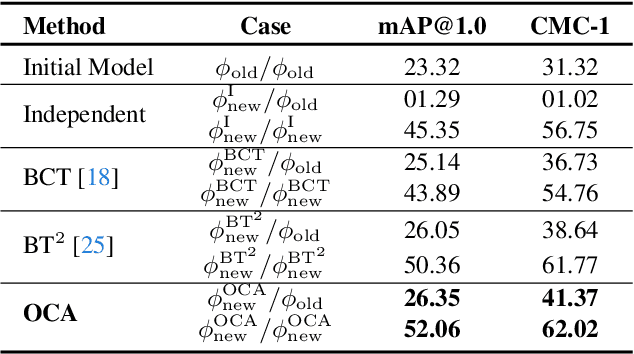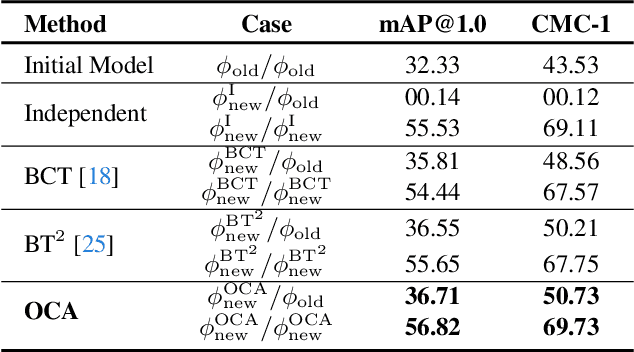Alberto Del Bimbo
FRED: The Florence RGB-Event Drone Dataset
Jun 05, 2025Abstract:Small, fast, and lightweight drones present significant challenges for traditional RGB cameras due to their limitations in capturing fast-moving objects, especially under challenging lighting conditions. Event cameras offer an ideal solution, providing high temporal definition and dynamic range, yet existing benchmarks often lack fine temporal resolution or drone-specific motion patterns, hindering progress in these areas. This paper introduces the Florence RGB-Event Drone dataset (FRED), a novel multimodal dataset specifically designed for drone detection, tracking, and trajectory forecasting, combining RGB video and event streams. FRED features more than 7 hours of densely annotated drone trajectories, using 5 different drone models and including challenging scenarios such as rain and adverse lighting conditions. We provide detailed evaluation protocols and standard metrics for each task, facilitating reproducible benchmarking. The authors hope FRED will advance research in high-speed drone perception and multimodal spatiotemporal understanding.
Spike-TBR: a Noise Resilient Neuromorphic Event Representation
Jun 05, 2025Abstract:Event cameras offer significant advantages over traditional frame-based sensors, including higher temporal resolution, lower latency and dynamic range. However, efficiently converting event streams into formats compatible with standard computer vision pipelines remains a challenging problem, particularly in the presence of noise. In this paper, we propose Spike-TBR, a novel event-based encoding strategy based on Temporal Binary Representation (TBR), addressing its vulnerability to noise by integrating spiking neurons. Spike-TBR combines the frame-based advantages of TBR with the noise-filtering capabilities of spiking neural networks, creating a more robust representation of event streams. We evaluate four variants of Spike-TBR, each using different spiking neurons, across multiple datasets, demonstrating superior performance in noise-affected scenarios while improving the results on clean data. Our method bridges the gap between spike-based and frame-based processing, offering a simple noise-resilient solution for event-driven vision applications.
Spatio-temporal Transformers for Action Unit Classification with Event Cameras
Oct 29, 2024



Abstract:Face analysis has been studied from different angles to infer emotion, poses, shapes, and landmarks. Traditionally RGB cameras are used, yet for fine-grained tasks standard sensors might not be up to the task due to their latency, making it impossible to record and detect micro-movements that carry a highly informative signal, which is necessary for inferring the true emotions of a subject. Event cameras have been increasingly gaining interest as a possible solution to this and similar high-frame rate tasks. We propose a novel spatiotemporal Vision Transformer model that uses Shifted Patch Tokenization (SPT) and Locality Self-Attention (LSA) to enhance the accuracy of Action Unit classification from event streams. We also address the lack of labeled event data in the literature, which can be considered one of the main causes of an existing gap between the maturity of RGB and neuromorphic vision models. Gathering data is harder in the event domain since it cannot be crawled from the web and labeling frames should take into account event aggregation rates and the fact that static parts might not be visible in certain frames. To this end, we present FACEMORPHIC, a temporally synchronized multimodal face dataset composed of RGB videos and event streams. The dataset is annotated at a video level with facial Action Units and contains streams collected with various possible applications, ranging from 3D shape estimation to lip-reading. We then show how temporal synchronization can allow effective neuromorphic face analysis without the need to manually annotate videos: we instead leverage cross-modal supervision bridging the domain gap by representing face shapes in a 3D space. Our proposed model outperforms baseline methods by effectively capturing spatial and temporal information, crucial for recognizing subtle facial micro-expressions.
Neuromorphic Drone Detection: an Event-RGB Multimodal Approach
Sep 24, 2024Abstract:In recent years, drone detection has quickly become a subject of extreme interest: the potential for fast-moving objects of contained dimensions to be used for malicious intents or even terrorist attacks has posed attention to the necessity for precise and resilient systems for detecting and identifying such elements. While extensive literature and works exist on object detection based on RGB data, it is also critical to recognize the limits of such modality when applied to UAVs detection. Detecting drones indeed poses several challenges such as fast-moving objects and scenes with a high dynamic range or, even worse, scarce illumination levels. Neuromorphic cameras, on the other hand, can retain precise and rich spatio-temporal information in situations that are challenging for RGB cameras. They are resilient to both high-speed moving objects and scarce illumination settings, while prone to suffer a rapid loss of information when the objects in the scene are static. In this context, we present a novel model for integrating both domains together, leveraging multimodal data to take advantage of the best of both worlds. To this end, we also release NeRDD (Neuromorphic-RGB Drone Detection), a novel spatio-temporally synchronized Event-RGB Drone detection dataset of more than 3.5 hours of multimodal annotated recordings.
Garment Attribute Manipulation with Multi-level Attention
Sep 16, 2024



Abstract:In the rapidly evolving field of online fashion shopping, the need for more personalized and interactive image retrieval systems has become paramount. Existing methods often struggle with precisely manipulating specific garment attributes without inadvertently affecting others. To address this challenge, we propose GAMMA (Garment Attribute Manipulation with Multi-level Attention), a novel framework that integrates attribute-disentangled representations with a multi-stage attention-based architecture. GAMMA enables targeted manipulation of fashion image attributes, allowing users to refine their searches with high accuracy. By leveraging a dual-encoder Transformer and memory block, our model achieves state-of-the-art performance on popular datasets like Shopping100k and DeepFashion.
Neuromorphic Facial Analysis with Cross-Modal Supervision
Sep 16, 2024



Abstract:Traditional approaches for analyzing RGB frames are capable of providing a fine-grained understanding of a face from different angles by inferring emotions, poses, shapes, landmarks. However, when it comes to subtle movements standard RGB cameras might fall behind due to their latency, making it hard to detect micro-movements that carry highly informative cues to infer the true emotions of a subject. To address this issue, the usage of event cameras to analyze faces is gaining increasing interest. Nonetheless, all the expertise matured for RGB processing is not directly transferrable to neuromorphic data due to a strong domain shift and intrinsic differences in how data is represented. The lack of labeled data can be considered one of the main causes of this gap, yet gathering data is harder in the event domain since it cannot be crawled from the web and labeling frames should take into account event aggregation rates and the fact that static parts might not be visible in certain frames. In this paper, we first present FACEMORPHIC, a multimodal temporally synchronized face dataset comprising both RGB videos and event streams. The data is labeled at a video level with facial Action Units and also contains streams collected with a variety of applications in mind, ranging from 3D shape estimation to lip-reading. We then show how temporal synchronization can allow effective neuromorphic face analysis without the need to manually annotate videos: we instead leverage cross-modal supervision bridging the domain gap by representing face shapes in a 3D space.
Backward-Compatible Aligned Representations via an Orthogonal Transformation Layer
Aug 16, 2024



Abstract:Visual retrieval systems face significant challenges when updating models with improved representations due to misalignment between the old and new representations. The costly and resource-intensive backfilling process involves recalculating feature vectors for images in the gallery set whenever a new model is introduced. To address this, prior research has explored backward-compatible training methods that enable direct comparisons between new and old representations without backfilling. Despite these advancements, achieving a balance between backward compatibility and the performance of independently trained models remains an open problem. In this paper, we address it by expanding the representation space with additional dimensions and learning an orthogonal transformation to achieve compatibility with old models and, at the same time, integrate new information. This transformation preserves the original feature space's geometry, ensuring that our model aligns with previous versions while also learning new data. Our Orthogonal Compatible Aligned (OCA) approach eliminates the need for re-indexing during model updates and ensures that features can be compared directly across different model updates without additional mapping functions. Experimental results on CIFAR-100 and ImageNet-1k demonstrate that our method not only maintains compatibility with previous models but also achieves state-of-the-art accuracy, outperforming several existing methods.
Prompt and Prejudice
Aug 07, 2024Abstract:This paper investigates the impact of using first names in Large Language Models (LLMs) and Vision Language Models (VLMs), particularly when prompted with ethical decision-making tasks. We propose an approach that appends first names to ethically annotated text scenarios to reveal demographic biases in model outputs. Our study involves a curated list of more than 300 names representing diverse genders and ethnic backgrounds, tested across thousands of moral scenarios. Following the auditing methodologies from social sciences we propose a detailed analysis involving popular LLMs/VLMs to contribute to the field of responsible AI by emphasizing the importance of recognizing and mitigating biases in these systems. Furthermore, we introduce a novel benchmark, the Pratical Scenarios Benchmark (PSB), designed to assess the presence of biases involving gender or demographic prejudices in everyday decision-making scenarios as well as practical scenarios where an LLM might be used to make sensible decisions (e.g., granting mortgages or insurances). This benchmark allows for a comprehensive comparison of model behaviors across different demographic categories, highlighting the risks and biases that may arise in practical applications of LLMs and VLMs.
iSEARLE: Improving Textual Inversion for Zero-Shot Composed Image Retrieval
May 05, 2024Abstract:Given a query consisting of a reference image and a relative caption, Composed Image Retrieval (CIR) aims to retrieve target images visually similar to the reference one while incorporating the changes specified in the relative caption. The reliance of supervised methods on labor-intensive manually labeled datasets hinders their broad applicability. In this work, we introduce a new task, Zero-Shot CIR (ZS-CIR), that addresses CIR without the need for a labeled training dataset. We propose an approach named iSEARLE (improved zero-Shot composEd imAge Retrieval with textuaL invErsion) that involves mapping the visual information of the reference image into a pseudo-word token in CLIP token embedding space and combining it with the relative caption. To foster research on ZS-CIR, we present an open-domain benchmarking dataset named CIRCO (Composed Image Retrieval on Common Objects in context), the first CIR dataset where each query is labeled with multiple ground truths and a semantic categorization. The experimental results illustrate that iSEARLE obtains state-of-the-art performance on three different CIR datasets -- FashionIQ, CIRR, and the proposed CIRCO -- and two additional evaluation settings, namely domain conversion and object composition. The dataset, the code, and the model are publicly available at https://github.com/miccunifi/SEARLE.
Stationary Representations: Optimally Approximating Compatibility and Implications for Improved Model Replacements
May 04, 2024



Abstract:Learning compatible representations enables the interchangeable use of semantic features as models are updated over time. This is particularly relevant in search and retrieval systems where it is crucial to avoid reprocessing of the gallery images with the updated model. While recent research has shown promising empirical evidence, there is still a lack of comprehensive theoretical understanding about learning compatible representations. In this paper, we demonstrate that the stationary representations learned by the $d$-Simplex fixed classifier optimally approximate compatibility representation according to the two inequality constraints of its formal definition. This not only establishes a solid foundation for future works in this line of research but also presents implications that can be exploited in practical learning scenarios. An exemplary application is the now-standard practice of downloading and fine-tuning new pre-trained models. Specifically, we show the strengths and critical issues of stationary representations in the case in which a model undergoing sequential fine-tuning is asynchronously replaced by downloading a better-performing model pre-trained elsewhere. Such a representation enables seamless delivery of retrieval service (i.e., no reprocessing of gallery images) and offers improved performance without operational disruptions during model replacement. Code available at: https://github.com/miccunifi/iamcl2r.
 Add to Chrome
Add to Chrome Add to Firefox
Add to Firefox Add to Edge
Add to Edge